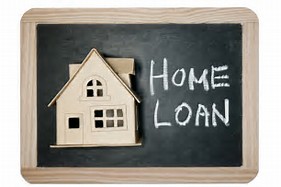Choosing the Right Type of Home Loan
 Choosing a loan type is one of the most important decisions you’ll make during the home buying process. After all, the loan will stay with you until you pay it off, sell the home, or refinance, and that could be many years.
Choosing a loan type is one of the most important decisions you’ll make during the home buying process. After all, the loan will stay with you until you pay it off, sell the home, or refinance, and that could be many years.
So it’s important to consider each type of mortgage loan in advance, with an eye toward the pros and cons of each type.
The best way to start this decision-making process is to narrow down the field. Start with the major differences between mortgage loans (such as fixed vs. adjustable rate), and learn the pros and cons of each option. This way, you can reduce the number of options and make the final decision easier to reach.
The Major Types of Home Loans
The biggest difference between home loans has to do with their interest rates, and particularly how the rate behaves over the long term. Home loans can have either a fixed or adjustable rate. Of course, within each of these categories there are many sub-categories, but it all starts with the fixed versus adjustable classification. This is one of your primary choices, as a borrower.
With a fixed-rate mortgage loan, your interest rate will never change, regardless of what the economy does. On the contrary, adjustable-rate mortgages (also referred to as ARM loans) have interest rates that adjust periodically during the life of the loan. So right away, you can see some of the pros and cons of the latter choice.
Fixed-Rate Mortgage Loan: Pros & Cons
As the name suggests, a fixed-rate mortgage is when the interest rate stays the same over the life or “term” of the loan. As a result, your monthly payment does not change when using this option.
Certainty is the primary benefit of a fixed-rate mortgage loan. You always know what your interest rate will be, regardless of what the economy does. Even if average interest rates rise sharply during your repayment period, yours will stay the same.
The downside is that you’ll pay a premium for this predictability, in the form of a higher interest rate. Fixed-rate loans typically come with higher interest costs, when compared to ARMs. So it’s a tradeoff.
Adjustable-Rate Mortgage (ARM) Loan: Pros & Cons
These days, most adjustable mortgages start off with a fixed rate for an initial period of time, usually 3, 5 or 7 years. During this introductory or initial period, the interest rate is fixed and will not change. After the introduction period, however, the loan converts to an adjustable-rate.
During the initial fixed period, the interest rate of an ARM loan is usually lower than the interest rate on a traditional fixed mortgage. That’s the primary advantage of using an ARM.
The downside is that you can never predict how the interest rate will adjust after the introductory period. Here again, there is a tradeoff to consider. You might start off with a lower interest rate than a regular fixed loan, but you have the uncertainty of the adjustment phase later on.
An ARM loan may be a good choice if you only plan to live in a home for a few years. That way, you could benefit from the lower interest rate during the initial period, but sell the home before the uncertainty of the adjustment period.
Once you’ve decided between a traditional fixed-rate mortgage and an adjustable-rate mortgage, you’ve made things a lot easier. By making this decision first, you’re narrowing your options considerably. Then it’s just a matter of examining the different types of loans under the particular classification you’ve chosen.